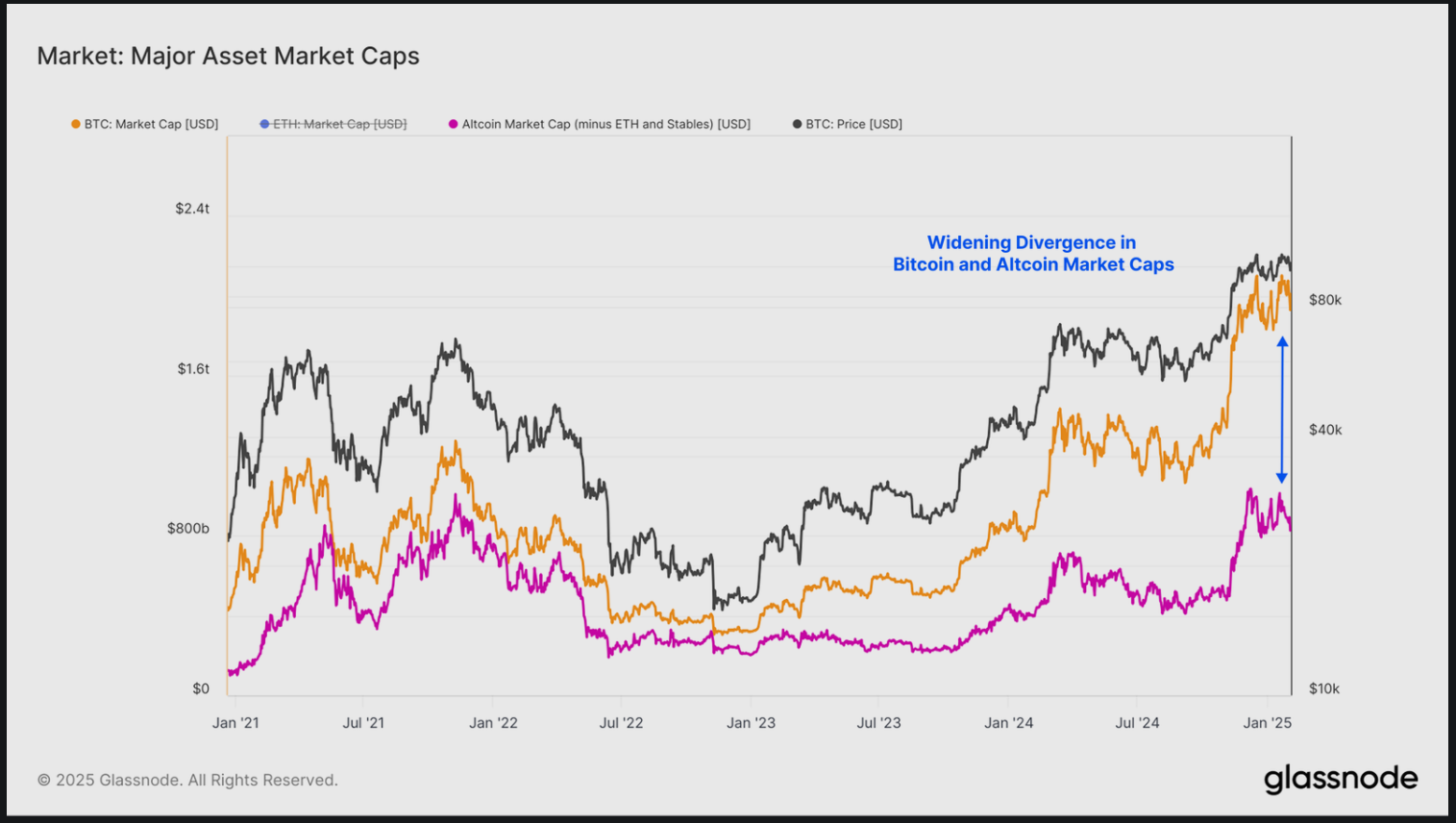-
Bitcoin’s current market cycle is regarded as “atypical” by Glassnode, highlighting its robust liquidity and the surge in institutional adoption amidst global events.
-
As a testament to its evolution, Bitcoin has witnessed over $850 billion in capital inflows, establishing a daily economic volume of approximately $9 billion.
-
A recent statement from Glassnode indicated that Bitcoin’s growing influence is further fueled by institutional investment and Bitcoin ETFs, contributing to reduced volatility and heightened demand.
This article explores Bitcoin’s atypical market cycle, driven by significant capital inflows and institutional adoption, which shapes its role as a global asset.
Bitcoin’s Increasing Global Influence
According to insights from Glassnode, Bitcoin is firmly establishing itself as a store of value and a vital medium of exchange. The report notes a remarkable net capital inflow exceeding $850 billion alongside a daily economic volume of nearly $9 billion.
Furthermore, countries such as Bhutan and El Salvador have integrated Bitcoin into their financial strategies, with ongoing discussions in the United States government regarding Bitcoin’s potential as a strategic reserve asset.
The analysis also highlights Bitcoin’s market capitalization, which has now reached $2 trillion, positioning it as the seventh-largest asset globally, surpassing traditional commodities like silver and large corporations like Saudi Aramco and Meta.
A significant market reaction was observed over the weekend; Bitcoin, alongside other cryptocurrencies, saw a sharp decline after the announcement of new tariffs by the Trump administration. The volatility experienced—where Bitcoin dropped from $104,000 to below $93,000—underscores Bitcoin’s function as a 24/7 global asset during times of macroeconomic development and uncertainty.
Glassnode suggests that this volatility reflects a broader trend, emphasizing that global events drive investors to leverage Bitcoin—a sentiment echoed by Robert Kiyosaki, who views the recent correction as a crucial wealth-building opportunity amid economic uncertainty.
Institutional Investors Driving Market Trends
Bitwise CIO Matt Hougan has suggested that the recent executive order from President Trump could significantly alter Bitcoin’s market dynamics. This order, which affects financial regulation and digital assets, is anticipated to pave the way for major Wall Street banks and investors to engage more thoroughly with the cryptocurrency landscape.
“It [the executive order] created a pathway for the largest Wall Street banks and investors to move aggressively into the space. However, the full mainstreaming of crypto—the one contemplated by Trump’s executive order, where banks custody crypto alongside other assets, stablecoins are integrated broadly into the global payments ecosystem, and the largest institutions establish positions in crypto—I’m convinced will bring trillions,” Hougan stated.
In the wake of the executive order aligned with increased regulatory clarity, inflows into crypto surged to $1.9 billion following a series of weeks marked by positive investment trends in January.
Glassnode’s report highlights a structural shift in Bitcoin’s investor base, with an increasing presence of institutional investors. The launch of US spot Bitcoin ETFs has opened regulated avenues for investment, resulting in over $40 billion in net inflows and total assets under management (AUM) surpassing $120 billion within just one year.
“If we dive into the IBIT investor cap table (as noted by analyst TXMC), we can see clear signs of heightened demand from institutional investors. This provides further evidence that Bitcoin is attracting an increasingly sophisticated investor base,” states the report.
BTC is More Resilient and Less Volatile, Glassnode Says
Additionally, the report references the FTX collapse that occurred in late 2022, which has led to a marked increase in Bitcoin’s dominance, rising from 38% to 59%. This shift signifies a growing preference for Bitcoin compared to alternative cryptocurrencies.
Amid this backdrop, analysts note that Bitcoin’s narrative as a monetary hedge remains strong, aided by enhanced accessibility via ETFs.
Notably, Bitcoin’s market capitalization has surged from $363 billion at the 2022 lows to $1.93 trillion, showcasing a stimulated growth rate of 5.3x, compared to altcoins which saw increases from $190 billion to $892 billion—a 4.7x growth—as indicated in the report.

Despite the divergence in growth rates, Bitcoin and altcoins still exhibit a degree of correlation. A notable reversal in Bitcoin dominance could indicate a potential capital rotation back into altcoins, igniting the anticipated “alt season.”
Research from on-chain analytics also indicates that Bitcoin’s current cycle has demonstrated greater stability relative to prior cycles, with realized losses during downturns remaining muted, and overall market volatility being lower than in previous bull markets.
Analysts attribute this phenomenon to a more informed investor base, particularly retail investors who choose to accumulate during market corrections, rather than engage in panic selling at peaks. Nonetheless, the increased presence of institutional investors, ongoing regulatory changes, and heightened liquidity are factors that contribute to a more structured and sophisticated Bitcoin market.
Conclusion
The current landscape suggests that Bitcoin’s atypical market cycle, coupled with significant institutional investment and Bitcoin ETFs, is redefining its status in the global financial environment. Investors and analysts alike should monitor these trends closely, as they may herald further developments in Bitcoin’s adoption and market dynamics.






